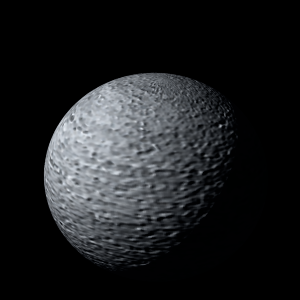|
|
Space Astro
|
Info for exoplanet "Gehionn"
| Scientific (actual) data |
|---|
| Name | CoRoT-36 b |
| Planet status | Confirmed |
| Planet mass | 0.68 |
| Radius | 1.41 |
| Orbital period | 5.61653 |
| Semi major axis | 0.066 |
| Orbit eccentricity | 0 |
| Inclination | 85.83 |
| Discovered | 2022 |
| Updated | 2022-07-19 |
| Tzero tr | 2455660 |
| K | 65 |
| Temperature (kelvin) | 1567 |
| Publication | Published in a refereed paper |
| Detection type | Primary Transit |
| Mass measurement type | Radial Velocity |
| Radius measurement type | Primary Transit |
| Star name | CoRoT-36 |
| Right ascension | 277.75° |
| Declination | 7.18° |
| Mag v | 13.1 |
| Star distance | 954 |
| Star metallicity | -0.1 |
| Star mass | 1.32 |
| Star radius | 1.52 |
| Star age | 2.1 |
| Star temperature | 6730 |
| Wikipedia article | CoRoT-36 b |
Back
| |
| Fictional info (?) |
|---|
| Suggested name | Gehionn |
| Planet type | Hot gas giant |
| .
The outer atmosphere is visibly segregated into several bands at different latitudes, resulting in turbulence and storms along their interacting boundaries. |
| Atmosphere | Hydrogen peroxide | 56% |
| Helium | 29% |
| Methane | 6% |
| Carbonyl sulfide | 3.9% |
| Water vapor | 3.7% |
| Hydrogen chloride | 0.64% |
| Neon | 2.0E-6% |
| Atmospheric pressure | 0.28 bar |
 |
| No known satellites |
| Google search for Gehionn |
|
Website by Joachim Michaelis
|
|
|
|